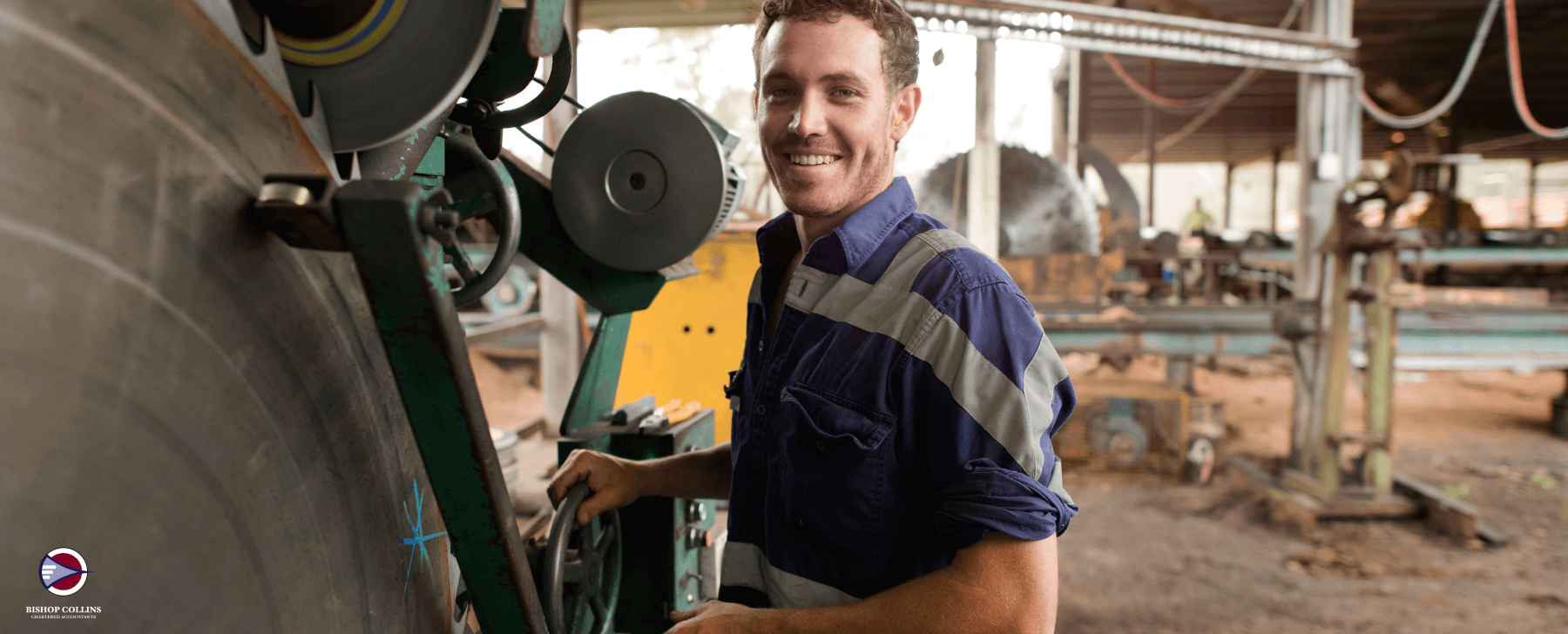To encourage businesses to keep staff employed and people spending in the wake of COVID-19, the Australian Government needed to provide tax relief to improve cash flow in the economy.
This led to various measures, allowing businesses to either instantly write off assets or claim accelerated depreciation for tax purposes.
The availability of the instant asset write-off and accelerated depreciation measures will depend on various criteria.
Simplified depreciation rules and small business entities (<$10M turnover)
For the simplified depreciation rules, a small business entity is defined as:
- an entity that has carried on a business for all or part of an income year and has turnover of less than $10M.
Turnover includes the turnover of the business seeking to apply the rules, as well as the turnover of any entities connected with the business. This is referred to as the “aggregated turnover” of the business. More information relating to the concept of aggregated turnover can be accessed from the Australian Taxation Office (ATO) website: Aggregation | Australian Taxation Office (ato.gov.au).
The simplified depreciation rules provide for an instant asset write-off, or immediate deduction, for low-cost assets. A low-cost asset is an asset where the GST exclusive cost of the asset is less than the relevant threshold as set out in the table below:
Instant Asset Write-Off Thresholds for Business Turnover < $10M: Low-cost asset threshold
| New or second-hand asset acquired | Threshold |
| 12 Mar 2020 to 31 Dec 2020 (used or installed pre 30 Jun 2021) | $150,000 |
| 1 Jul 2021 onward | $1,000 |
When a business chooses to use the simplified depreciation rules to access the instant asset write-off benefit, they must use all the simplified depreciation rules. More information relating to the simplified depreciation rules can be accessed from the ATO website: Simpler depreciation for small business | Australian Taxation Office (ato.gov.au).
The choice to opt out of the instant asset write-off of assets isn’t available if a business is using the simplified depreciation rules. Small businesses can only opt out of the instant asset write off rules by opting out of the simplified depreciation rules.
The instant asset write off also isn’t available to small business entities which haven’t elected to use the simplified depreciation rules.
The instant asset write-off is available for medium and medium to large businesses.
The instant asset write-off rules provide for an instant asset write-off or immediate deduction where the GST exclusive cost of the asset is less than the relevant threshold as set out in the tables below:
Instant Asset Write-Off Thresholds for Business Turnover $10M to $50M (medium business)
| New or second-hand asset acquired | Threshold |
| 12 Mar 2020 to 31 Dec 2020 (used or installed pre 30 Jun 2021) | $150,000 |
| 1 Jul 2021 onward | $100 |
Business Turnover $50M to $500M (medium to large business)
| New or second-hand asset acquired | Threshold |
| 12 Mar 2020 to 31 Dec 2020 (used or installed pre 30 Jun 2021) | $150,000 |
| 1 Jul 2021 onward | $100 |
The choice to opt out of the instant asset write-off of assets isn’t available for medium and medium to large businesses.
Temporary full expensing and small business entities (<$10M turnover)
Under the temporary full expensing rules, a small business entity may claim an immediate deduction for the cost of assets in the year the asset is first used or installed ready for use. To be eligible for temporary full expensing the depreciating asset may be new or second hand and must be used or installed ready for use between 7 October 2020 and 30 June 2022.
Businesses acquiring a qualifying asset
Businesses which acquire a qualifying asset will be eligible for an income tax deduction as set in the table below:
Business Turnover < $10M
| New or second-hand asset acquired | Available deduction |
| 7:30 pm 6 October 2020 to 30 Jun 2021 | No limit |
| 1 Jul 2021 to 30 Jun 2022 | No limit |
Small business entities may use the temporary full expensing measure regardless of whether they use the simplified depreciation rules. However, small business entities which are using the simplified depreciation rules must use these rules.
Business Turnover $10M to $50M (medium business)
| New or second-hand asset acquired | Available deduction |
| 7:30 pm 6 October 2020 to 30 Jun 2021 | No limit |
| 1 Jul 2021 to 30 Jun 2022 | No limit |
Business Turnover $50M to $500M (medium to large business)
| New asset acquired | Available deduction |
| 7:30 pm 6 October 2020 to 30 Jun 2021 | No limit |
| 1 Jul 2021 to 30 Jun 2022 | No limit |
Medium and medium to large businesses may irrevocably choose to opt out of the temporary full expensing measures on an asset-by-asset basis.
Accelerated depreciation rules and small business entities (<$10M turnover)
Accelerated depreciation deductions are available in the year an asset is first used or installed ready for use for a taxable purpose.
These accelerated depreciation measures are also known as the ‘Backing Business Investment incentive (BBII)’ measures. The accelerated depreciation deduction is only available if the asset is a qualifying asset.
In broad terms, a qualifying asset is a new asset for which the entity hasn’t claimed a deduction under the instant asset write-off or temporary full expensing rules and was first used or installed ready for use between 12 March 2020 and 30 June 2021. The asset also needs to have cost $150,000 or more for the accelerated depreciation rules to apply, for assets less than $150,000, the Instant Asset Write-Off rules apply.
Businesses with a qualifying asset, using the simplified depreciation rules will be eligible for an income tax deduction as set in the tables below:
Business Turnover < $10M
| New asset acquired | Available deduction |
| 12 Mar 2020 to 30 Jun 2020 | 57.5% of GST excl. cost |
| 1 Jul 2020 to 30 Jun 2021 | 57.5% of GST excl. cost |
Businesses with a qualifying asset but don’t use the simplified depreciation rules will be eligible for an income tax deduction as set in the table below:
| New asset acquired | Available deduction |
| 12 Mar 2020 to 30 Jun 2020 | 50.0% of GST excl. cost plus usual depreciation on balance |
| 1 Jul 2020 to 30 Jun 2021 | 50.0% of GST excl. cost plus usual depreciation on balance |
Business turnover $10M to $500M (medium and medium to large business).
If you are an entity with aggregated turnover between $10M and $500 million, you may be eligible to deduct an amount under backing business investment – accelerated depreciation if the asset is eligible and you cannot or have chosen not to apply temporary full expensing to that asset. The amount your entity can deduct in the income year the asset is first used or installed ready for use is:
| New asset acquired | Available deduction |
| 12 Mar 2020 to 30 Jun 2020 | 50.0% of GST excl. cost plus usual depreciation on balance |
| 1 Jul 2020 to 30 Jun 2021 | 50.0% of GST excl. cost plus usual depreciation on balance |
Medium and medium to large businesses may irrevocably choose to opt out of the temporary full expensing measures on an asset-by-asset basis.
For a concise summary of the rules, the ATO has produced an excellent summary and this can be found at the following link: Interaction_of_tax_depreciation_incentives.pdf (ato.gov.au).
Be aware of complexity and hidden risks
The rules are complex, and at times can be difficult to navigate. For this reason, we encourage you to work closely with your accountant to determine what options will work best for you. Whilst the thought of claiming an immediate deduction for your depreciating assets seems attractive, there are several important points which you should consider:
- Claiming accelerated depreciation on a depreciating asset for tax purposes only provides a tax benefit based on timing. The deduction would have otherwise been available, you’re just bringing it forward. Before deciding to acquire an asset, you should also consider the economic benefits of doing so.
- If you’re trading as a company, claiming accelerated depreciation will reduce the amount of income tax you pay. Whilst the tax deduction is advantageous, it may also impact your ability to declare and pay fully franked dividends to shareholders.
- Each of the measures referred to above are income tax measures. Be mindful of the importance of maintaining separate depreciation schedules for accounting and tax purposes. This will ensure that your financial accounts (which amongst other things are used for reporting profitability, debt covenants and to support submissions for tenders) aren’t negatively impacted.
- The profit on the sale of any assets which are written off to nil for tax purposes now will be fully assessable and subject to tax in the future.
What qualifies for instant asset write-off?
Instant asset write-offs are tangible assets used by your business such as vehicles, tools, office equipment and machinery that attract an immediate deduction. Assets can be new or second-hand, with a total deduction value of $150,000. It’s important to remember that the temporary tax deduction scheme covers the full cost of depreciable assets up to a maximum of $150,000.
For assets that have mixed personal and business use, only the business use percentage can be deducted. As an example, if you purchase a car for your business and use it for personal commutes, shopping, school runs, etc 30% of the time, you can only write off 70% of the asset cost under the scheme.
For assets to qualify for deductions, they must also be installed, in use or ready to use before June 30, 2023, which is the deadline for the scheme. An asset that is purchased before the deadline that won’t be operational until after the deadline would not qualify for the write-off. Should you sell the asset at a later date, the total sale amount must be included in your net taxable income for that financial year.
Has the instant asset write-off been extended to 2022?
When it comes to key tax topics, many business owners are wondering if the instant asset write-off scheme has been extended to 2022. You’ll be pleased to learn that the scheme has been extended into the 2022/2023 tax year making any eligible assets deductible until June 30, 2023.
This means that as long as each of your tangible assets is below the $150,000 asset write-off threshold, you will be able to immediately deduct the full amount on a per asset basis – with no limit on the number of assets covered by the scheme. Of course, you need to consider your short term cashflow when making large purchases, with certain exclusions from the scheme such as non-tangible assets, capital works and horticultural plants.
Can I still claim an instant asset write-off?
As the scheme has been extended until the end of the financial year (EOFY) in 2023, any qualifying assets that have been purchased, installed and are in use by June 30th, 2023 can be deducted.
Of course, for any asset that exceeds the $150,000 threshold, general depreciation rules kick in. This can be quite a challenge to calculate, with complex rules complicating things further. However, with an experienced accountant to hand, assets of all values can be taken care of.
Take some time to familiarise yourself with these measures and factors related to instant asset write-off and acceleration depreciation. The decisions which you make now (or are forced to make if you can’t “opt out”) are likely to have broader consequences beyond the sugar hit of an immediate tax deduction.


